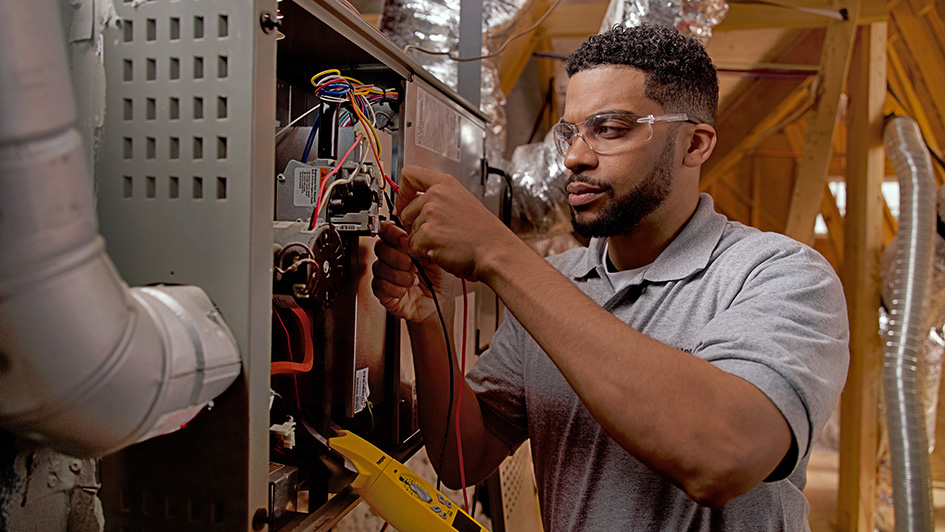
A furnace is usually a background player in your home, ensuring you're warm in the cold winter months. It often won't be noticed until a malfunction appears.
One cause could be that your furnace has a cracked heat exchanger. It can be a safety risk, so it’s worthwhile to learn the evidence of a cracked heat exchanger and what you can do if you are worried that may be the problem.
What Is a Heat Exchanger in a Furnace?
A heat exchanger helps move heat from the combustion chamber inside your furnace to the air that moves through the ventilation. It usually handles this with coils or tubes that heat the air while functioning as a barrier to keep the gasses produced in the combustion chamber, called flue gasses, from leaking out into your home.
Is a Cracked Heat Exchanger Dangerous?
Because of its key role, it’s no surprise that a broken heat exchanger can pose a risk. A crack in the heat exchanger can allow dangerous gasses – such as carbon monoxide, which can be lethal – to circulate through your home.
For that reason, do NOT turn on your heater if you suspect it has a cracked heat exchanger, as letting it run could make the entire household sick. Contact an HVAC professional immediately if you believe your heater has a cracked heat exchanger that needs repair.
Four Warning Signs of a Cracked Heat Exchanger:
- Furnace switches off: Cracks in the heat exchanger could cause your furnace to shut off.
- Odd Smells: If the air leaving your furnace has a powerful chemical scent, it may be an indicator that gas is seeping through cracks in your heat exchanger. These byproducts, which will often smell like formaldehyde, are a significant warning sign.
- Carbon monoxide alarm initiates or you notice symptoms of poisoning: If a cracked heat exchanger is emitting carbon monoxide in your home, your carbon monoxide alarm could go off or family members could start experiencing signs of carbon monoxide poisoning. Side effects include headaches, dizziness, weakness, nausea, vomiting or feeling drowsy. If your alarm goes off or you feel unwell, get out of the home right away and then call for help.
- Soot: If you see black sooty collecting on the exterior of your furnace, it’s another sign something could be seriously wrong.
What You Should Do if the Furnace Heat Exchanger is Cracked
If you believe your furnace has a cracked heat exchanger, call a professional with extensive experience in furnace installation Reinholds right away so they can examine your system and, if required, perform a furnace heat exchanger replacement. Costs often differ depending on the situation, but estimates run in the neighborhood of $1,000 to $3,000.
Estimates aside, the good news is that heat exchangers are generally protected by the warranty. You’ll want to confirm the warranty paperwork on your furnace, because while the warranty might not cover the entire cost of repairs, it still may significantly shrink your bill.
How to Prevent a Cracked Heat Exchanger in Your Home
One of the most convenient ways to avoid problems in your furnace overall is with routine furnace maintenance. Furnaces provide the best possible return on investment when they operate efficiently. Hiring a skilled professional to check your furnace for worn-out parts, clogs in the air filters and other potential problems can keep you from getting a big bill later on.
It’s also a good idea to review your furnace filters every few months – it’s recommended some filters be changed every 90 days or sooner if they are dirty or grimy. While the filters are not part of the heat exchanger itself, the strain of pulling air through a clogged filter makes your entire furnace work longer to do its job. And the harder your furnace has to work, the more wear and tear pieces like the heat exchanger will experience.
